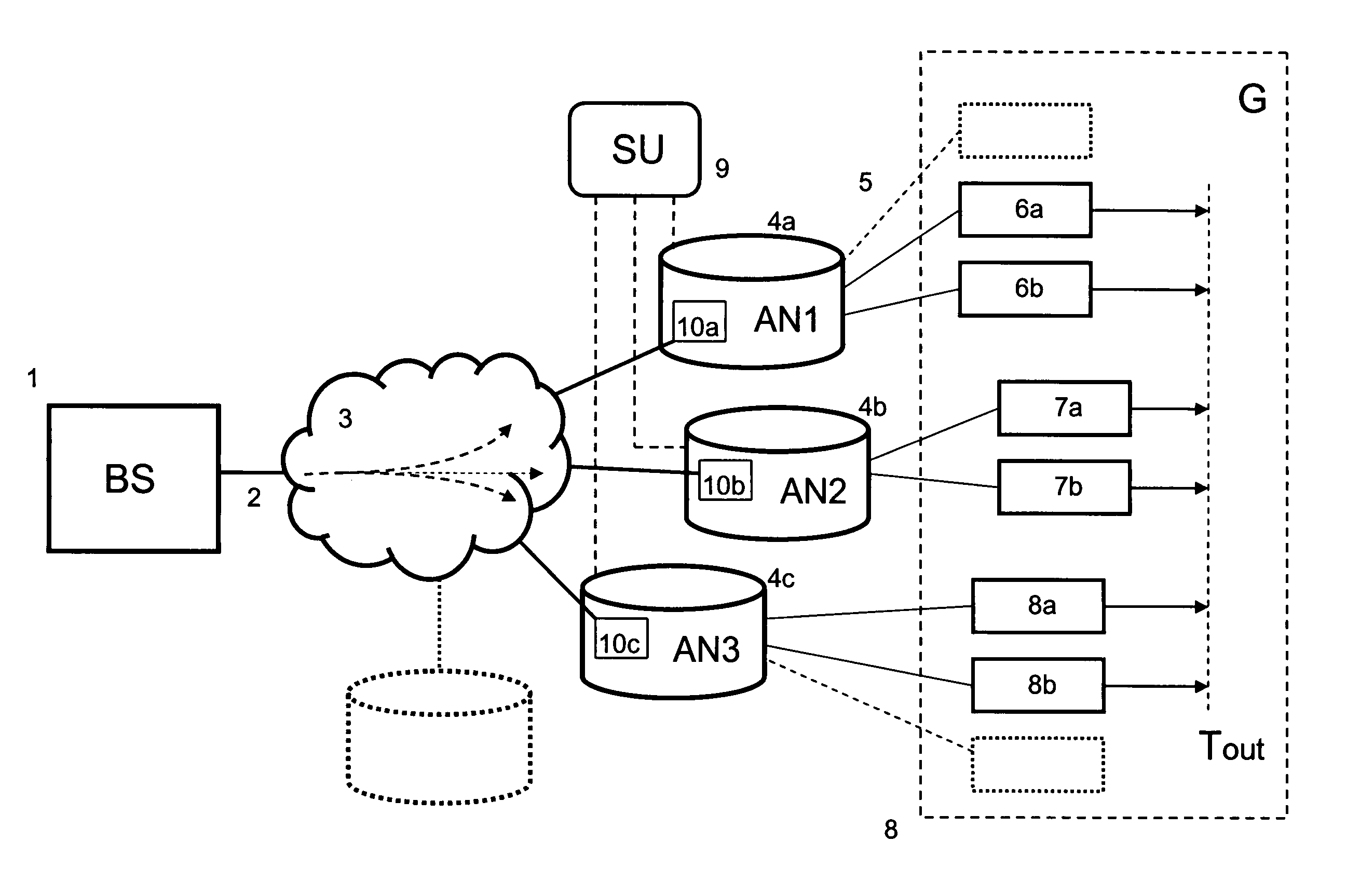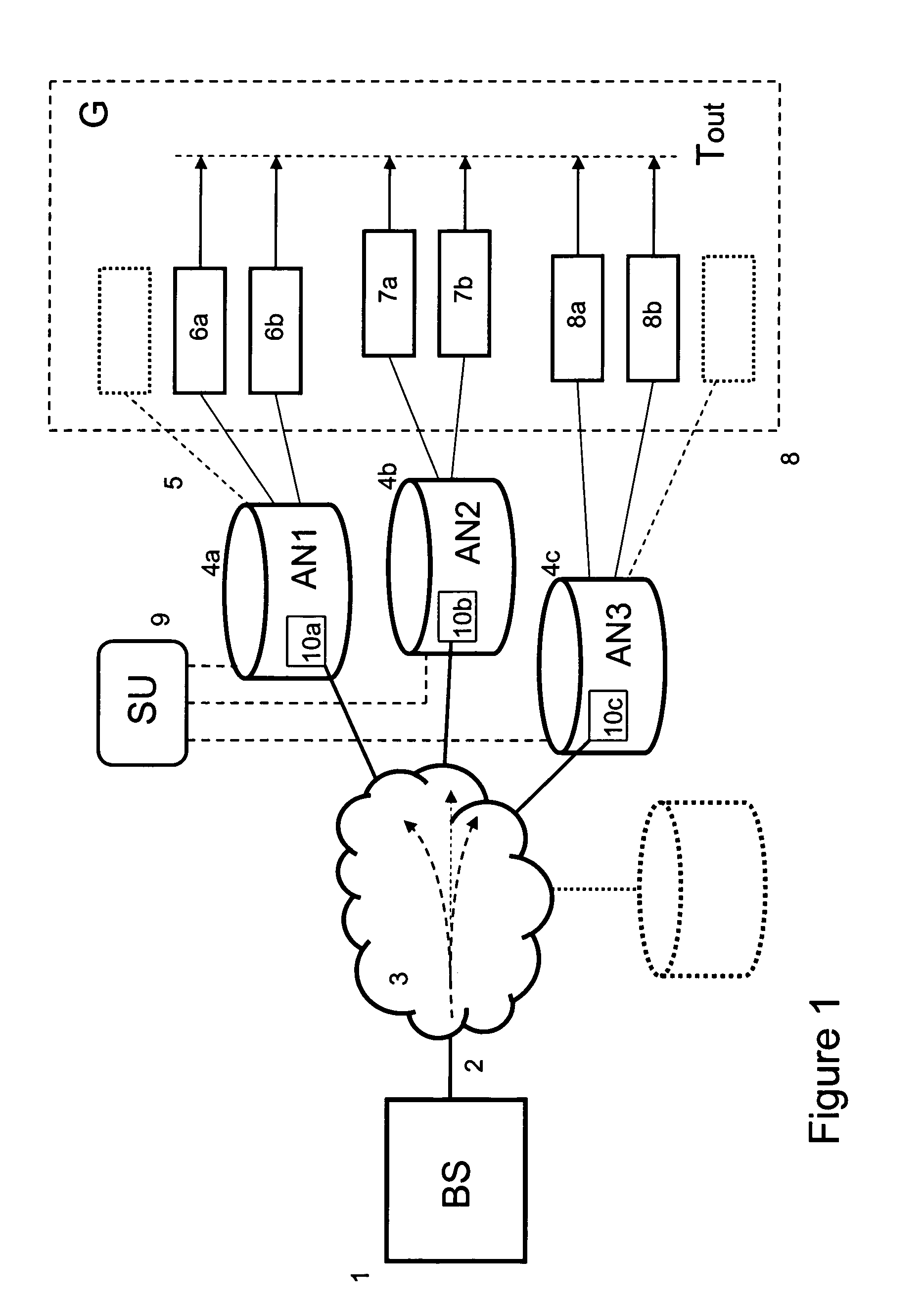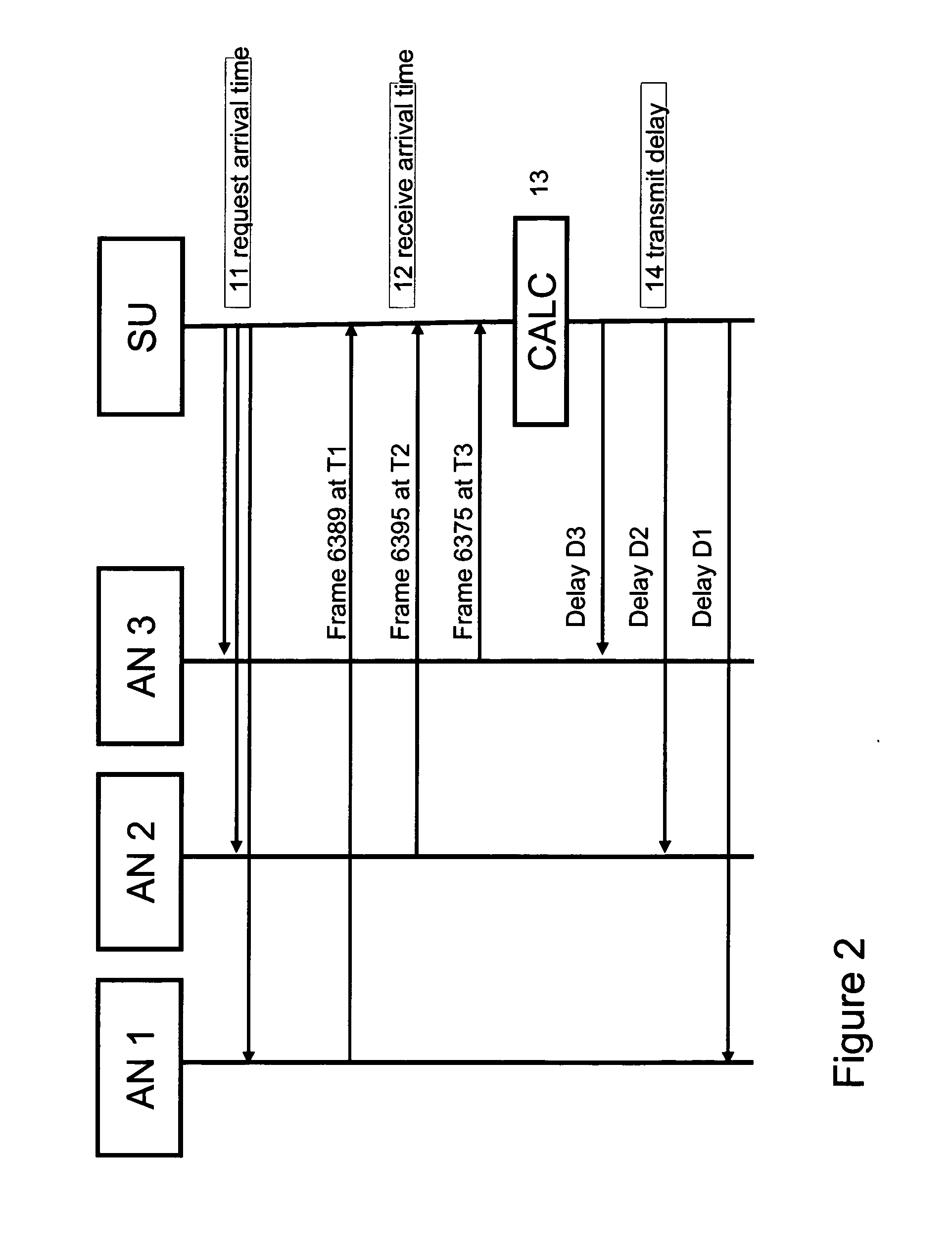Method and System for Synchronizing a Group of End-Terminals
a technology of end-terminals and synchronization methods, applied in data switching networks, frequency-division multiplexes, instruments, etc., can solve problems such as limited scalability of proposed schemes, unknown delays in packets in the network, and introduction of iptv systems
- Summary
- Abstract
- Description
- Claims
- Application Information
AI Technical Summary
Benefits of technology
Problems solved by technology
Method used
Image
Examples
Embodiment Construction
[0064]FIG. 1 illustrates a first system according to the invention. A broadcast station (BS) 1, preferably an IPTV system, e.g. an IPTV system having an IMS-type architecture, transmits a packetized transport stream 2, typically a multicast stream, via a network 3, e.g. a high bandwidth IP network, of an operator to a number of access nodes (AN1, AN2, AN3, . . . ; 4a, 4b, 4c, . . . ).
[0065]The video content in the stream may be compressed using for example MPEG-2 or MPEG-4. Further, the Real-time Transport Protocol (RTP) may be used to stream the IPTV content over the network. The services provided by RTP include sequence numbering, time stamping and delivery monitoring allowing synchronization of the packets in one stream and between associated streams so that consecutive frames in a stream are played at the correct time.
[0066]The access nodes may be an Digital Subscriber Line Access Multiplexer (DSLAM), an Cable Modem Termination System (CMTS), an optical access node or an edge ro...
PUM
 Login to View More
Login to View More Abstract
Description
Claims
Application Information
 Login to View More
Login to View More - R&D
- Intellectual Property
- Life Sciences
- Materials
- Tech Scout
- Unparalleled Data Quality
- Higher Quality Content
- 60% Fewer Hallucinations
Browse by: Latest US Patents, China's latest patents, Technical Efficacy Thesaurus, Application Domain, Technology Topic, Popular Technical Reports.
© 2025 PatSnap. All rights reserved.Legal|Privacy policy|Modern Slavery Act Transparency Statement|Sitemap|About US| Contact US: help@patsnap.com



